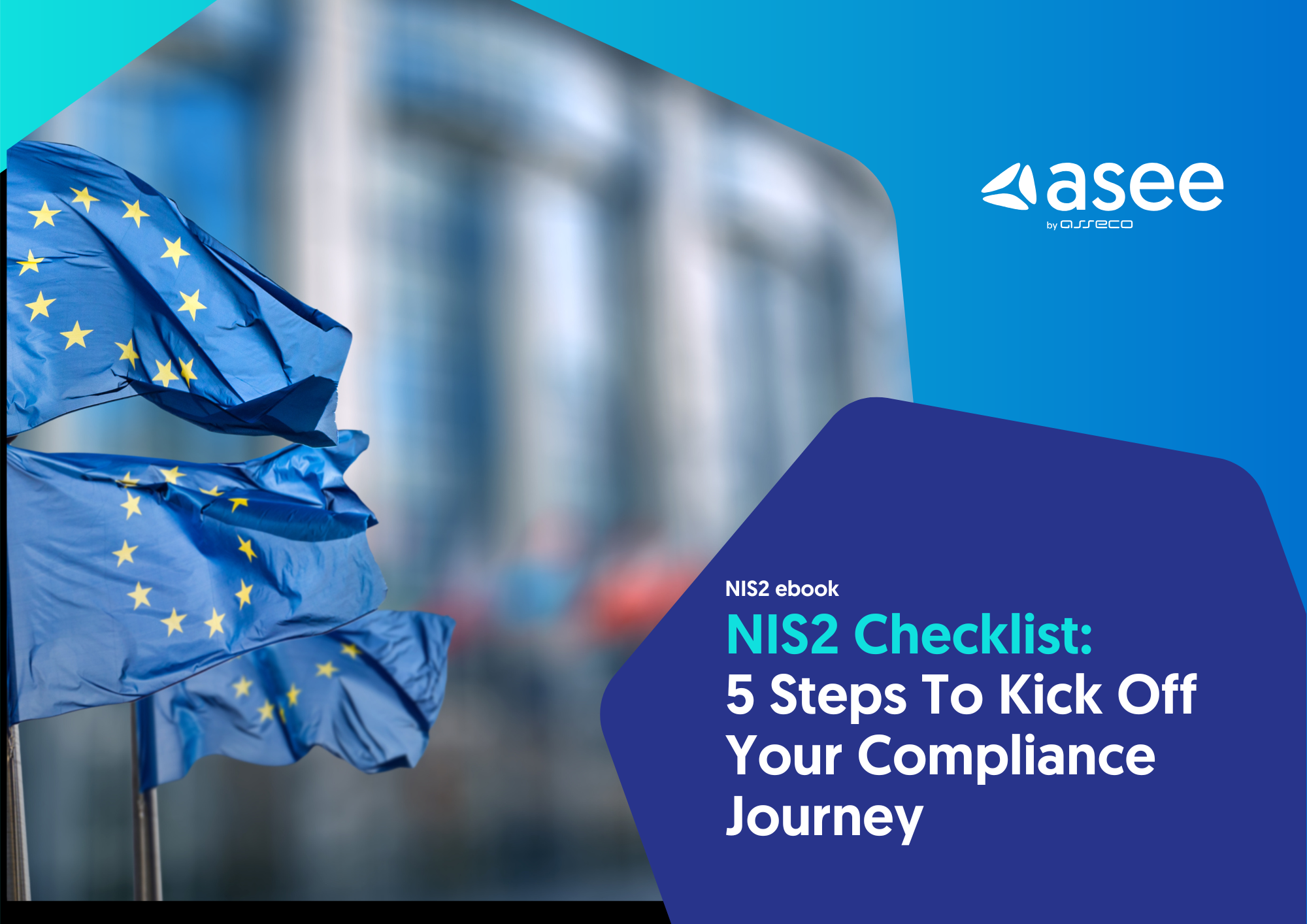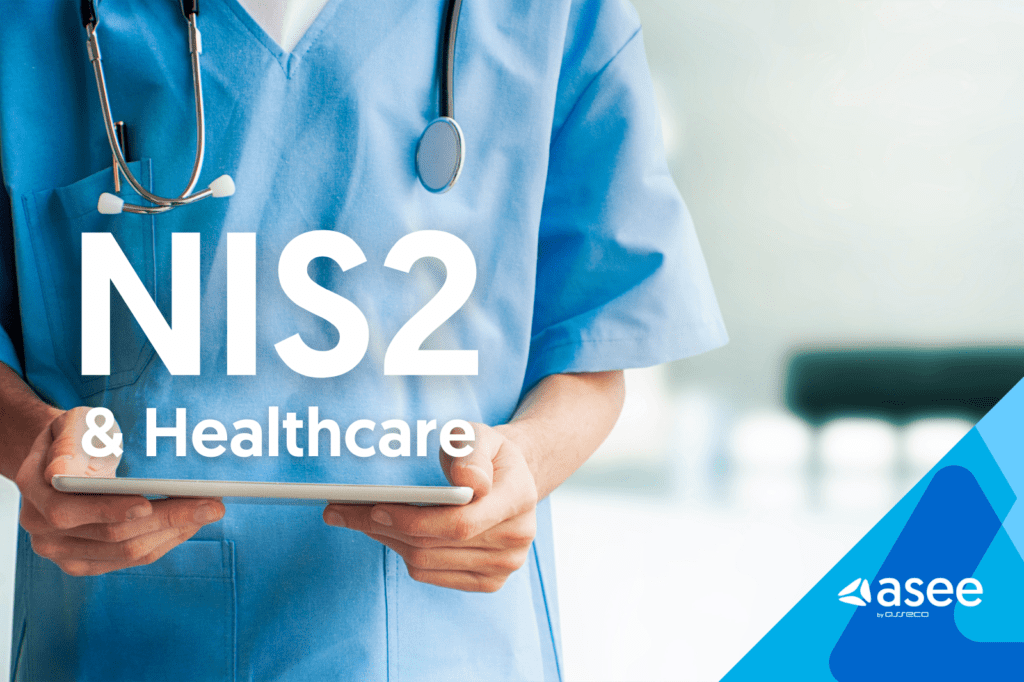
Download NIS2 Checklist
Feeling lost about where to start when it comes to the NIS2 Directive? That is why we decided to equip you with actionable steps on how to kick off your compliance journey and reach full compliance with ASEE.

But what exactly does this mean for healthcare providers? How will hospitals, clinics, and medical institutions need to adapt? And what are the risks of non-compliance? In this article, we break down the impact of NIS2 on the healthcare sector, highlight key compliance challenges, and propose practical cybersecurity solutions to help healthcare organizations navigate the NIS2 requirements.
Under NIS2, the healthcare sector is classified as an “essential entity.” This means that hospitals, pharmaceutical companies, and medical device manufacturers fall under the highest level of scrutiny in terms of cybersecurity compliance.
Healthcare institutions are a prime target for cyberattacks primarily because attackers are driven by financial gain. Ransomware, one of the most common attack methods, involves encrypting an organization's data and demanding a ransom for its release. In the healthcare sector, where every minute of downtime can jeopardize patient care and even lives, attackers know that these institutions are often forced to act quickly - even if it means paying a hefty sum - to restore operations.
Following, healthcare organizations manage a vast amount of sensitive personal and medical data. This confidential information is highly valuable on the dark web, where attackers can sell it for profit. The potential for unauthorized access, data tampering, and leaks makes healthcare a particularly lucrative target, amplifying the need for rigorous security measures.
Given these challenges, it is crucial for healthcare providers to implement defenses such as Identity and Access Management (IAM) and Multi-Factor Authentication (MFA). These measures serve as an extra secure "lock" on the door, countering the common exploitation of weak passwords and improper access controls.
Being an essential entity means that non-compliance is not an option—organizations that fail to meet NIS2 standards can face severe financial penalties, reputational damage, and even legal consequences. Given that healthcare deals with sensitive personal and medical data, the risks associated with cybersecurity breaches are especially high.
Healthcare institutions that fail to comply with NIS2 requirements could face:
To avoid these risks, healthcare organizations need to act now and implement cybersecurity solutions that align with NIS2 requirements.
One of the biggest gaps in healthcare cybersecurity is the continued reliance on static passwords. Many hospitals still allow employees to log into critical systems with simple usernames and passwords, making them easy targets for phishing and credential-based attacks. Common examples of such weak passwords include “password123”, “11111”, and other easily guessable combinations. Incorporating additional authentication factors - such as an m-token or hardware token - ensures that even if a weak password is compromised, the attacker cannot gain access without the physical token.
Solution: Multi-Factor Authentication (MFA) & Passwordless Security
Use Case:
A major European hospital experienced a ransomware attack that was attributed to weak login security. In response, the institution explored stronger authentication measures, including the implementation of multi-factor authentication (MFA) and other advanced authentication methods, such as biometric smartcards. These changes helped reduce the risk of phishing-related breaches, streamlined the login process for employees, and significantly strengthened the organization’s overall cybersecurity posture.
With thousands of medical personnel, doctors, nurses, and administrative staff accessing healthcare systems daily, controlling who has access to what is crucial. Many hospitals lack centralized access control, leading to excessive privileges being granted, making it easier for attackers to exploit them.
Solution: Role-Based IAM Solution
A centralized Identity and Access Management (IAM) solution:
Use Case:
Let's say a company is worried about unauthorized access to medical data. By deploying an IAM system with role-based access control (RBAC), they reduced insider threats and ensured that only authorized personnel could access sensitive data.
Despite the shift to digital transformation, many hospitals and clinics still rely on paper-based documentation for prescriptions, patient records, and administrative approvals. Handwritten signatures are not only inefficient but also pose security risks—documents can be forged, lost, or tampered with.
Solution: PKI-Based Digital Signatures
By implementing Public Key Infrastructure (PKI) technology, hospitals can:
Use Case:
Many healthcare providers have started adopting digital signatures for electronic prescriptions as a way to enhance the security and integrity of medical documents. This shift not only helps in reducing the risk of fraud but also streamlines administrative processes, potentially leading to more efficient workflows and faster processing times.
Beyond the core challenges mentioned, healthcare organizations should also consider:
With the rise of connected medical devices (IoMT), healthcare IT environments are increasingly vulnerable. Hospitals should:
Under NIS2, healthcare institutions must establish a formal incident response plan and conduct regular cybersecurity training for employees. This includes:
The healthcare sector is facing a critical turning point in cybersecurity. With the NIS2 directive enforcing stricter requirements, hospitals, clinics, and pharmaceutical companies must prioritize cybersecurity investments or risk financial penalties, operational disruptions, and reputational damage.
By addressing key challenges such as MFA implementation, IAM solutions, digital signatures, and endpoint security, healthcare organizations can fortify their cybersecurity posture while improving efficiency and patient safety.
The time to act is now—securing healthcare systems today will protect patients, data, and critical medical infrastructure for the future.
Need help navigating NIS2 compliance for your healthcare organization? Our team provides tailored cybersecurity solutions designed to meet regulatory requirements while enhancing security and efficiency. Contact us!

Feeling lost about where to start when it comes to the NIS2 Directive? That is why we decided to equip you with actionable steps on how to kick off your compliance journey and reach full compliance with ASEE.